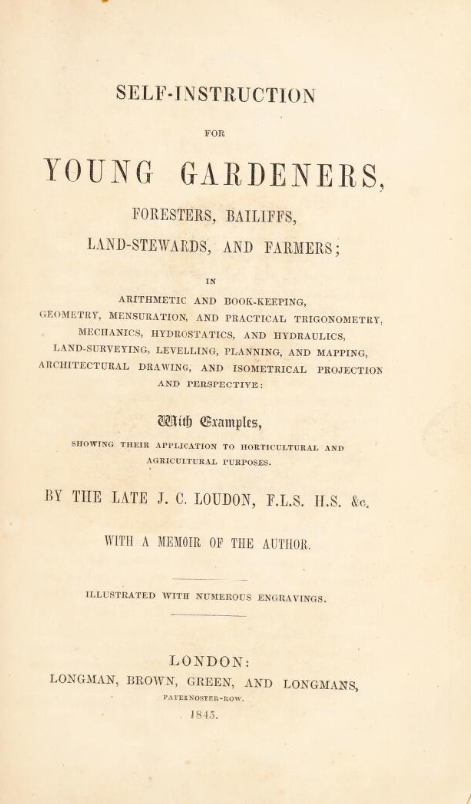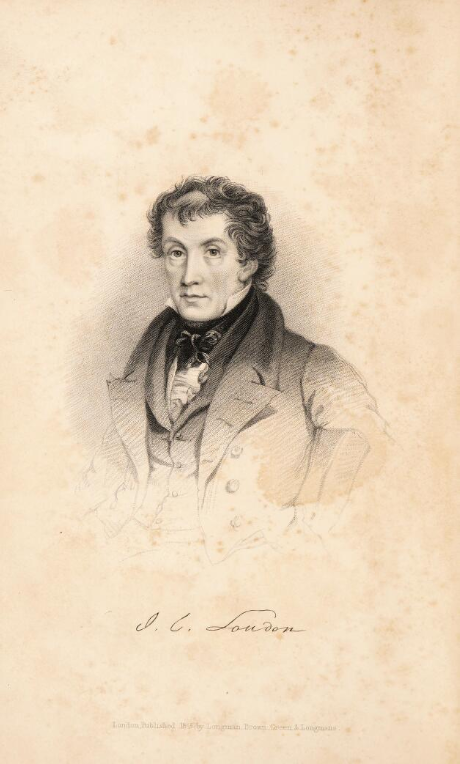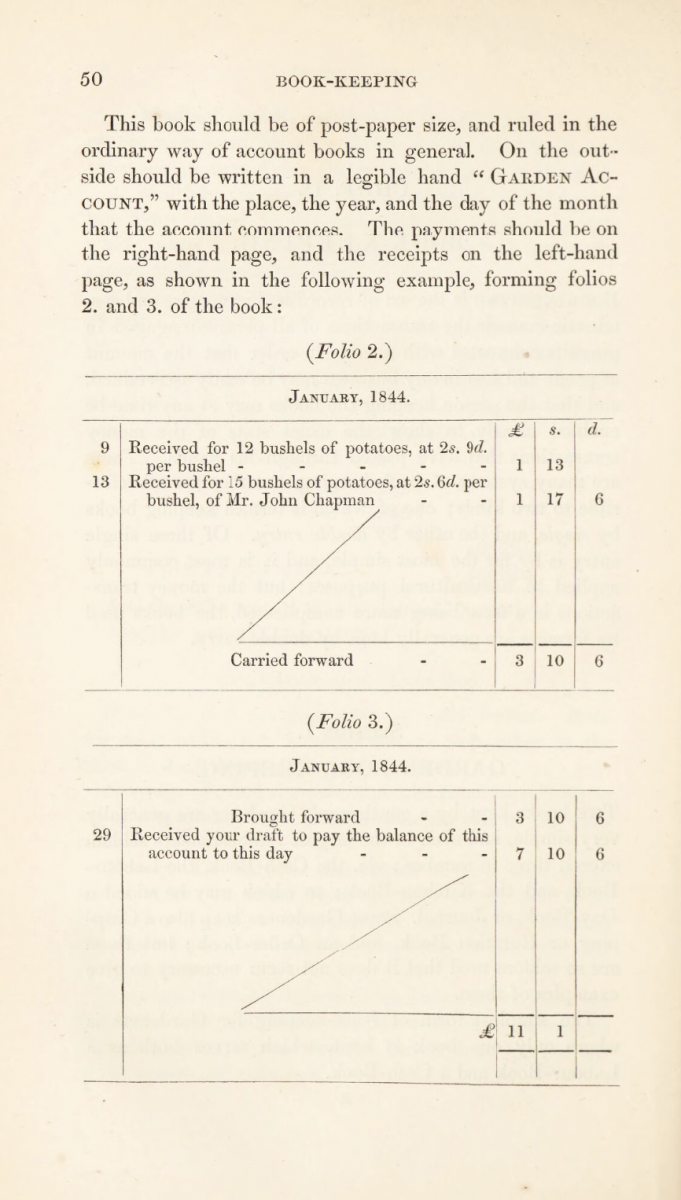- About MAA
- Membership
- MAA Publications
- Periodicals
- Blogs
- MAA Book Series
- MAA Press (an imprint of the AMS)
- MAA Notes
- MAA Reviews
- Mathematical Communication
- Information for Libraries
- Author Resources
- Advertise with MAA
- Meetings
- Competitions
- Programs
- Communities
- MAA Sections
- SIGMAA
- MAA Connect
- Students
- MAA Awards
- Awards Booklets
- Writing Awards
- Teaching Awards
- Service Awards
- Research Awards
- Lecture Awards
- Putnam Competition Individual and Team Winners
- D. E. Shaw Group AMC 8 Awards & Certificates
- Maryam Mirzakhani AMC 10 A Awards & Certificates
- Two Sigma AMC 10 B Awards & Certificates
- Jane Street AMC 12 A Awards & Certificates
- Akamai AMC 12 B Awards & Certificates
- High School Teachers
- News
You are here
Mathematical Treasure: J. S. Loudon’s Self-Instruction for Young Gardeners
The British Victorians were noted for their interest in gardens. They also had a newly acquired appreciation for numbers in computation. Both of these topics were covered in a text written by the Scottish biologist J. C. Loudon (1783–1843), a noted designer of gardens, and published posthumously. As the subtitle of his 1845 Self-Instruction for Young Gardeners, Foresters, Bailiffs, Land-stewards, and Farmers indicates (in arithmetic and bookkeeping, geometry, mensuration, and practical trigonometry, mechanics, hydrostatics, and hydraulics, land-surveying, levelling, planning, and mapping, architectural drawing, and isometrical projection and perspective: with examples, showing their application to horticultural and agricultural purposes), he discussed the use of mathematics in the laying out and designing a garden as well as other useful skills.

A portrait of the gardener-author greets the reader:

One of the chapters dealt with bookkeeping for the various occupations addressed by the book.

A full digitization of its copy is available from the Wellcome Library.
Frank J. Swetz (The Pennsylvania State University), "Mathematical Treasure: J. S. Loudon’s Self-Instruction for Young Gardeners," Convergence (July 2023)




